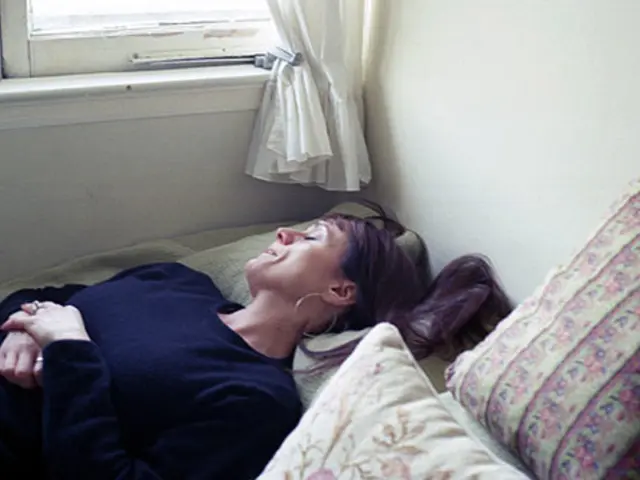Snores, sleep restlessness, a nightmare for the relationship
Restlessness during sleep due to partner's actions
Staring at the ceiling, wide awake, and annoyed by the snoring coming from the other side of the bed - does this ring a bell? You're not alone, especially if you're a woman.
Sleep specialist Kneginja Richter often finds that it's predominantly women who come to her seeking advice when there are sleep problems due to a partner's snoring or restlessness. "They want to sleep in the shared bed, but have trouble because their partner snores or moves around a lot," she explains. The next morning, those affected often look exhausted: their sleep wasn't deep enough, and they didn't get the necessary rest.
Gender differences in sleep problems
This can be attributed to the differing sleep patterns between men and women. Research shows that women are more easily awakened and receive jolts from seemingly minor noises, especially during specific stages of their life such as puberty, pregnancy, motherhood, or menopause. Hormonal changes are the reason for this, as Richter explains.
Men, on the other hand, are more often affected by obstructive sleep apnea - i.e., nocturnal breathing pauses and snoring. This can be linked to anatomical features, as Richter points out: men usually have larger neck circumferences and more visceral fat, which sits deep in the abdominal cavity and between the organs.
While one snores, the other lies beside them, irritated - at first glance, this isn't a promising combination. But Richter points out that studies show women, despite sleeping worse, still feel better in the shared bed. "That sounds paradoxical at first."
A cuddle hormone to the rescue?
So, what can explain this apparent contradiction? Richter suspects that it may be the oxytocin, a hormone that's known as the "cuddle hormone." This neurotransmitter is released during the REM (Rapid Eye Movement) sleep phase, especially when there is intimate body contact. This hormone has been shown to improve sleep quality and could potentially explain why women who sleep in the shared bed feel better, despite sleeping less.
Solutions for better sleep
But the cuddle hormone can't make up for every sleep frustration. If one wants to get to the root of the problem, there are several solutions worth considering:
- Earplugs: A cost-effective solution for snoring problems is to sleep with earplugs if your partner snores.
- Change your sleep routine: Try synchronizing your sleep patterns with your partner's by going to bed and falling asleep earlier.
- Separate beds: If earplugs or changing routines aren't effective, you might want to consider sleeping in a separate bed. This can help minimize disturbances from each other's movements or snoring.
- Sound masking: Using white noise machines or earplugs can help drown out snoring and movement noises, ensuring the non-snoring partner can sleep peacefully.
- Medical evaluation: If the snoring is causing clear symptoms of obstructive sleep apnea, such as gasping for air or daytime sleepiness, make an appointment with a sleep specialist for evaluation and treatment options.
Embracing the change
Separate beds can seem like a daunting step for some couples. Many may associate it with relationship issues. Richter, however, notes that this change can bring numerous benefits, including improved sleep quality, greater well-being, and even increased satisfaction in the bedroom.
Sources:
- ntv.de
- Ricarda Dieckmann, dpa
- Sleep specialists, such as Kneginja Richter, believe that the 'cuddle hormone', oxytocin, released during REM sleep and intimate body contact, might explain why women who sleep in a shared bed feel better despite sleeping less.
- Science has proven that women are more prone to sleep disturbances due to their partners' snoring or restlessness, as they are more easily awakened and sensitive to minor noises, especially during certain stages of life like menopause.
- To tackle sleep disorders arising from partnership, scientifically backed solutions include using earplugs, changing sleep routines, considering separate beds, utilizing sound masking devices, and seeking medical help for potential obstructive sleep apnea.








